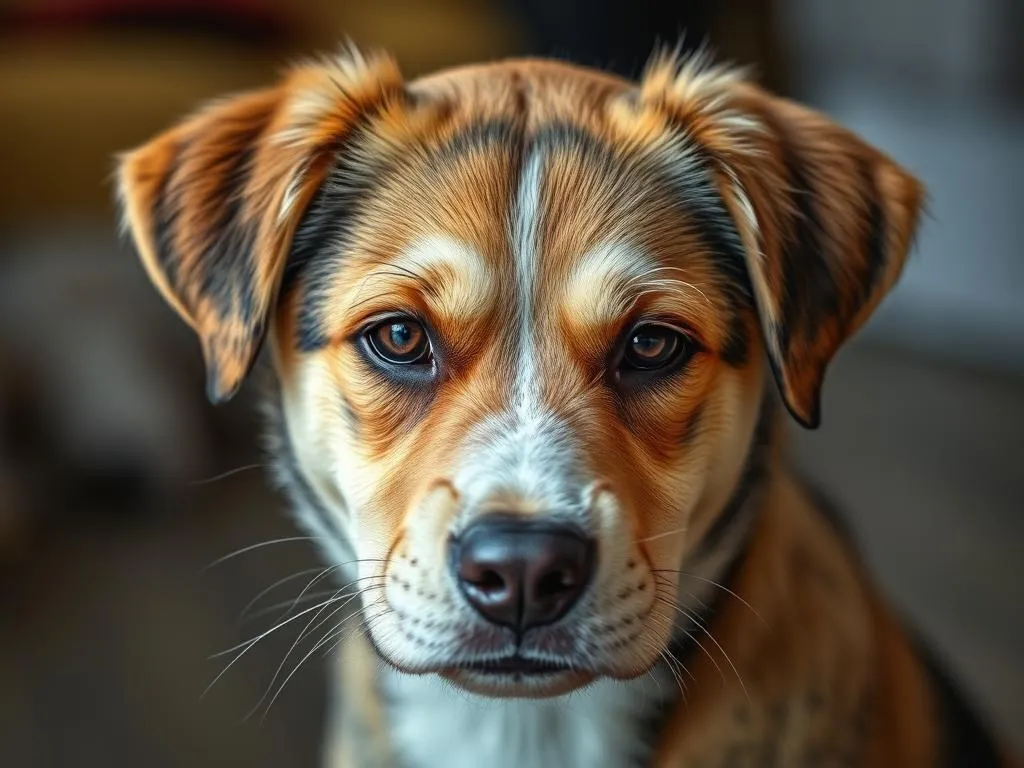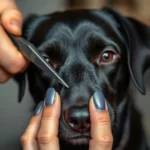
Introduction
Maintaining the health of our beloved dogs is essential for their happiness and longevity. As dogs age, they become more susceptible to various health issues, including arthritis, dental problems, and cognitive decline. It’s crucial for pet owners to remain vigilant about their older dog’s health needs, especially when introducing new pets into the household.
When an older dog is stressed by a new puppy, it can lead to a myriad of challenges. Understanding both dogs’ needs during this transition is vital for ensuring a harmonious environment. This article will provide insights on dog health care, focusing on how to manage the dynamics between an older dog and a new puppy.
Understanding Dog Health Care
Importance of Regular Vet Visits
Routine veterinary check-ups are paramount for ensuring the well-being of dogs, especially older ones. Typically, older dogs should visit the vet at least twice a year. These visits allow for early detection of health issues that may arise with age. Common health screenings for older dogs include:
- Blood tests to check organ function
- Dental examinations
- Weight assessments
- Joint health evaluations
Regular check-ups help owners stay proactive about their older dog’s health and address any concerns early on.
Nutrition and Diet
Nutrition plays a crucial role in maintaining the health of both older dogs and puppies. Older dogs have different dietary needs compared to their younger counterparts. They require diets that help manage their weight and support joint health, while puppies need nutrient-rich food to support their growth and development.
A balanced diet for an older dog may include:
- High-quality protein sources
- Omega fatty acids for coat and skin health
- Fiber for digestive health
Conversely, a puppy’s diet should be rich in calories and nutrients to support their rapid growth. Understanding these dietary differences is essential to promote optimal health for both dogs.
Mental and Physical Health
Physical activity is essential for maintaining the health of older dogs. However, their exercise routines should be adjusted according to their physical capabilities. Gentle walks, swimming, and low-impact games are excellent options for older dogs.
Mental stimulation is equally important. Engaging activities such as puzzle toys, scent games, and interactive play can help keep an older dog’s mind sharp and prevent cognitive decline.
Signs of Stress in Older Dogs
Behavioral Changes
When an older dog is stressed by a new puppy, it may exhibit various behavioral changes. Common signs of stress and anxiety include:
- Excessive barking or whining
- Hiding or seeking solitude
- Aggression or growling towards the puppy
Recognizing these signs early can help owners take appropriate actions to alleviate stress for the older dog.
Physical Symptoms
In addition to behavioral changes, physical symptoms can also indicate stress. Owners should monitor for:
- Changes in appetite (eating less or refusing food)
- Lethargy or decreased activity levels
- Unexplained weight loss or gain
These physical signs may indicate that the older dog is struggling with the new dynamics in the household.
Introducing a New Puppy to the Household
Preparing for the New Puppy
Before bringing a new puppy home, it’s essential to assess the older dog’s readiness for a new companion. Consider the following factors:
- The older dog’s temperament
- Existing health issues
- Your home environment
Creating a welcoming environment for the new puppy involves providing both dogs with their own spaces, toys, and sleeping areas to minimize competition.
Gradual Introduction Techniques
Introducing a new puppy to an older dog should be done gradually. Here’s a step-by-step guide:
-
Scent Exchange: Before the puppy arrives, allow the older dog to familiarize itself with the puppy’s scent by exchanging blankets or toys.
-
Controlled Meeting: On the first introduction, keep the puppy on a leash and allow the older dog to approach at its own pace. Monitor their body language closely.
-
Short Interactions: Keep initial interactions brief, gradually increasing the time they spend together as they become more comfortable.
-
Positive Reinforcement: Reward both dogs with treats and praise during positive interactions to reinforce good behavior.
Creating Safe Spaces
Having separate spaces for both dogs is crucial. The older dog should have a designated area where it can retreat when feeling overwhelmed.
Tips for establishing safe zones include:
- Using baby gates to separate areas of the house
- Providing separate food and water bowls
- Ensuring each dog has access to their own bed or crate
These measures can help reduce stress and anxiety during the adjustment period.
Managing Stress and Anxiety in Older Dogs
Training and Behavior Modification
To prevent overwhelming the older dog, basic training techniques for the new puppy are essential. Teaching the puppy basic commands like “sit,” “stay,” and “leave it” can significantly reduce chaotic interactions.
Positive reinforcement strategies, such as giving treats for good behavior, can help both dogs adjust to the new routine.
Calming Techniques
There are various calming techniques and natural remedies that can help alleviate stress in older dogs. Some options include:
- Calming pheromone diffusers: These can create a soothing environment.
- Herbal supplements: Products containing ingredients like valerian root can promote relaxation.
- Routine: Establishing a consistent routine for feeding and walks can provide stability for both dogs.
Seeking Professional Help
If stress and anxiety in the older dog persist, it may be time to consult a veterinarian or an animal behaviorist. They can provide tailored strategies and therapies, such as:
- Behavioral modification programs
- Prescription medications for anxiety
- Additional training resources
Professional guidance can make a significant difference in managing stress levels for the older dog.
Maintaining Health During the Transition
Monitoring Health and Behavior
During the adjustment period, keeping a close eye on both dogs’ health and behavior is crucial. Owners should take note of any changes, such as:
- Increased signs of stress
- Changes in eating habits
- Alterations in energy levels
Regular communication with the veterinarian can help address any emerging concerns.
Adjusting Care Routines
Modifying care routines to accommodate both dogs is essential. This may include:
- Scheduling separate feeding times to prevent competition
- Adjusting exercise routines to suit the older dog’s energy levels
- Providing individual attention to the older dog to ensure it feels valued
Making these adjustments can help create a balanced environment for both pets.
Long-Term Health Care Strategies
Regular Health Check-ups
Ongoing veterinary care is vital for both the older dog and the puppy. During vet visits, owners should discuss:
- Any concerns regarding the older dog’s health
- Vaccination schedules for the puppy
- Dietary recommendations for both dogs
Regular check-ups help ensure that both dogs remain healthy and any issues are addressed promptly.
Nutrition Adjustments Over Time
As both dogs grow and change, their dietary needs may also evolve. Be prepared to adapt their diets based on:
- Weight management
- Age-related health issues
- Activity levels
Incorporating supplements, such as joint support formulas for older dogs, can also contribute to their overall health.
Enrichment Activities
Long-term strategies for keeping both dogs mentally and physically stimulated are crucial. Engaging activities can include:
- Interactive toys that challenge their minds
- Group training sessions to promote bonding
- Outdoor adventures that allow exploration and exercise
These activities not only keep both dogs healthy but also strengthen their bond as companions.
Conclusion
Navigating the dynamics between an older dog stressed by a new puppy requires patience, understanding, and awareness of both dogs’ needs. Prioritizing their health and well-being is essential for creating a harmonious household. By monitoring their health, adjusting care routines, and providing mental and physical stimulation, pet owners can foster a loving environment for both their older dog and new puppy. The journey may have its challenges, but the rewards of a happy, healthy canine companionship are immeasurable.









